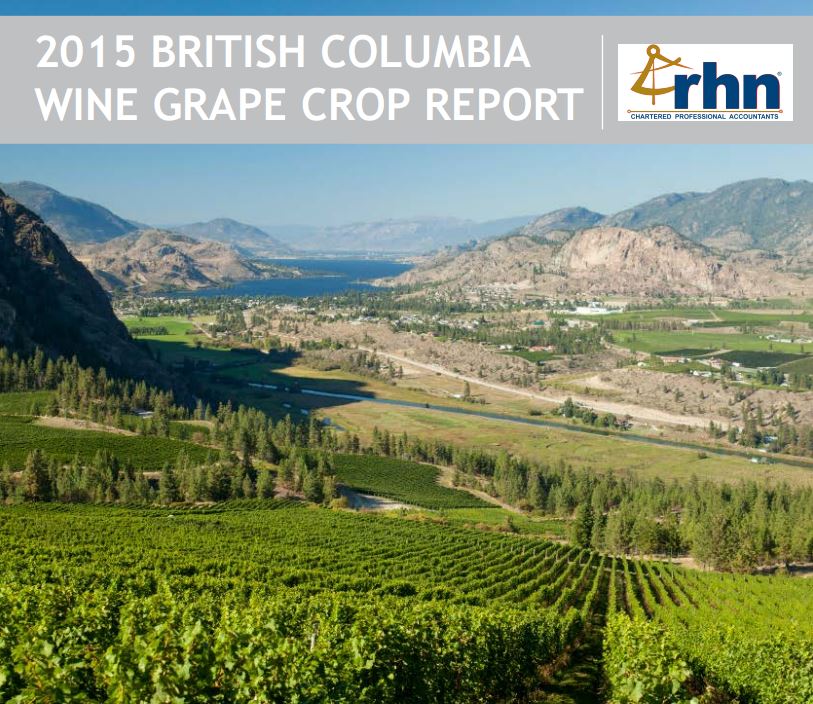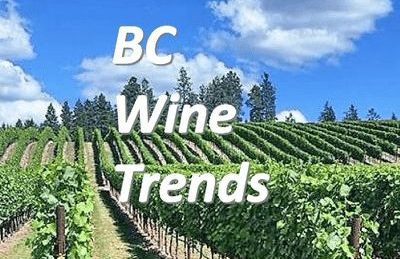
Here are the key findings from the latest BC wine crop report. Note the metrics are based on responses from only half the wineries.
Tonnage:
- There was only a minor increase in total wine grape tonnes over 2013. Surprising when we have heard from multiple sources how 2015 was a bountiful harvest! The 2015 crop may have been reduced by frost damage early in 2015 or late in 2014.
- Big decrease in Merlot tonnage, replaced by Pinot Noir. Note the comments below from both Winemakers and Wine Enthusiasts on the Pinot Noir increase. A little surprising as Cabernet Franc has the better yield than Pinot and a $300/ tonne price advantage. However, Merlot is still 34% of the red crop.

- 40% of the crop was from the Oliver production area. Down from 48% in 2013. Cooler climate grapes are more in demand?
Value:
- The total value of wine grape crop unchanged over 2013 at $69M.
- The highest selling price > Red was Malbec, White >Viognier and Semillon.
While the directional changes in the crop tonnage make sense, the large change in tonnages versus 2013 may be the fact that only 52% of the wineries participated in the survey.
I would be really interested in any comments from BC wine drinkers or winemakers.
Source: 2015 British Columbia Wine Grape Crop Report.


Hi, Julian.
The analysis is interesting.
I agree that the direction of the changes makes sense, except for the big increase in Pinot Gris when the tonnage was already large.
The jump in Riesling is a bit of a surprise. The reduction in Merlot is not: too much had been planted. Sad to see the Cab Franc crop is not on the rise. It should be.
Perhaps the 2015 crop was not as big as one would have expected because of frost damage early in 2015 or late in 2014. Not hard enough to kill vines but hard enough to kill buds when the icewine freeze came early.
John
Some interesting things:
1. Fewer wineries reported in 2015 compared to 2013 so it could be that the wineries that did respond had more pinot noir vines compared to the wineries that responded in 2013. 10% less response in 2015.
2. With this difference in response, I think the 17% increase could be misleading or within a reasonable margin of error.
3. Merlot is not that well loved, and maybe there is more appreciation of Pinot Noir.
4. There are more wineries producing sparkling wine in BC. Pinot Noir is one of the main sparkling wine grapes used, so it could be that there have really been more planted since 2013 (although if planted in 2013 or 2014, the grapes would not have been used for wine production yet.)
What do you think?
Karl: Excellent insight. Agree with all 4 points, especially the last one. Also, a number of winemakers I talked to about the 2015 vintage said that they had just started to use young Pinot Noir grapes for their Rosé.
Cheers,
Julian
Good points from Karl. I agree that the likely cause of the tonnage increase is the variation in winery response.
I would add a couple of other possible variables regarding the pinot noir increase. First of all, pinot noir planted just prior to 2013 may have been mature enough to have contributed to the 2015 tonnage for the first time. Second, less severe cropping or other vineyard management techniques could have increased the tonnage per acre, especially in a warm year. Although there would not be much incentive to increase tonnage if you were interested in crafting a quality red pinot noir, if used in the making of sparkling wine or Rosé some increase in tonnage might not impact quality significantly and would help keep the bank happy.
Agree 100% with your comments.
Hi Julian thank you for asking the question. We cannot really comment however as I do not understand the control elements between the surveys from the different years. It may be that different wineries are participating in the survey which may lead to different reports based on what varieties they specialize in. I can say however that 2015 was not necessarily a bumper crop year. It was in fact a drought year which lead to much smaller berry and cluster weights which also resulted in much less or equal amount of juice produced from fruit. It was however a very high quality of fruit as the concentrated flavours showed through from the smaller bunch rates. We in fact we’re down approximately 15% on our Pinot Noir production from our vineyard.
I hope this adds a little bit of insight. Have a great long weekend!
Curtis.
Hi Julian,
I don’t find those increases out of line. If you compare planted acreages in the acreage surveys of 2014 and 2011 you will see there were significant increases in Pinot Noir and Riesling acreage in the Westbank/ Kelowna and the Vernon and Lake Contry regions.
The accuracy of the aggregated numbers was checked by the Accountants from RHN. Unless we spot something seemingly way out of line, individual wineries are not checked. However, keep in mind that wineries supply the same tonnage data (individual and/or in aggregate form) to the BC Wine Grape Council and in most cases also the BC Wine Authority as mandated by regulation.
Regards,
Manfred
Manfred: Thanks for the explanation. Yes the Pinot Noir acreage increased by 13% and the Riesling acreage by 16% between 2011 and 2014 so the tonnage increases are reasonable.